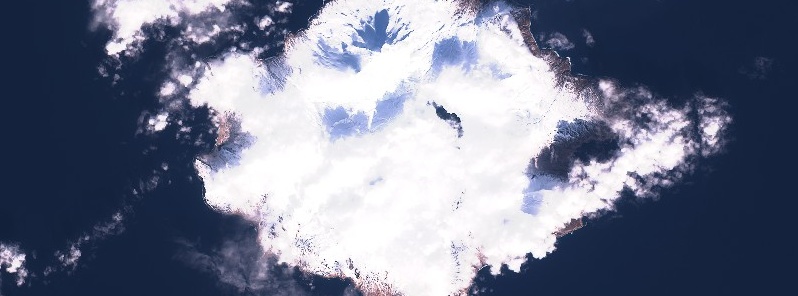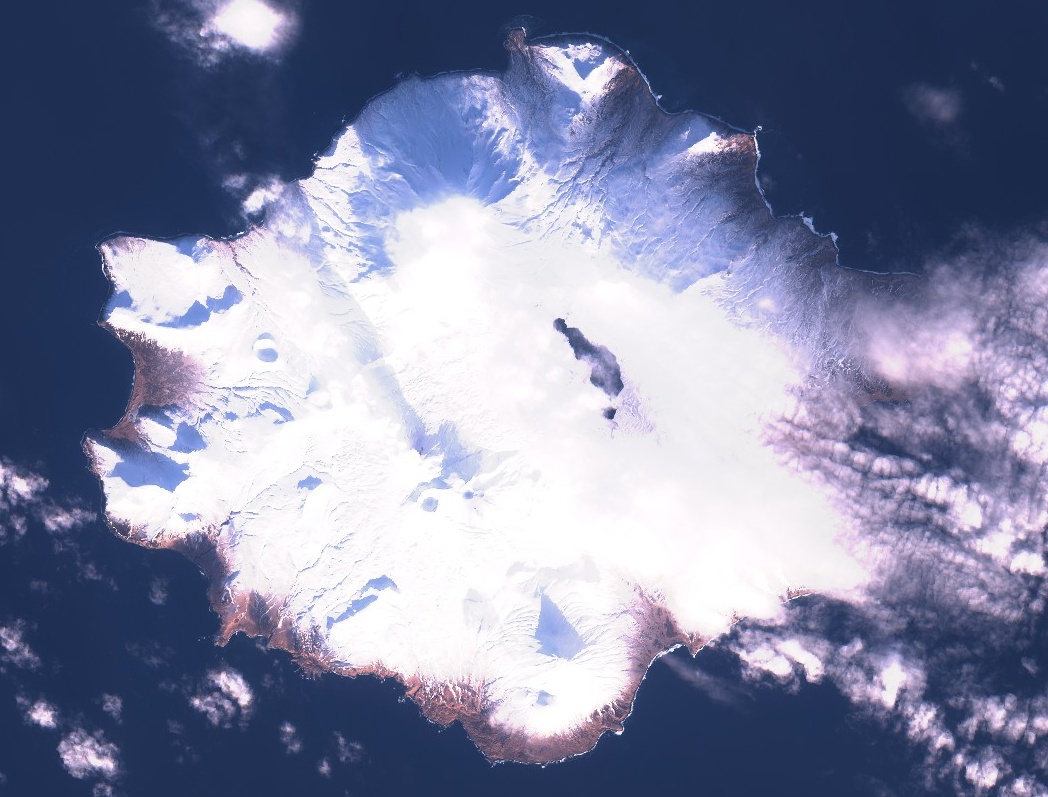Continuous tremor at Semisopochnoi volcano, Aviation Color Code raised to Orange, Alaska

Seismicity has been increasing over the last few days at Semisopochnoi volcano, Alaska and now is characterized by nearly continuous tremor and frequent small explosion signals.
The situation represents a significant increase in activity and the Alaska Volcano Observatory has increased the Aviation Color Code to ORANGE and the Volcano Alert Level to WATCH at 01:24 UTC on March 16, 2020.
No significant ash emissions have been detected in satellite images; clouds cover much of the island to around 3 km (10 000 feet) above sea level.
This volcano is monitored with an on-island seismic network, and remotely by satellite and lightning sensors. An infrasound array on Adak Island could detect explosive emissions from Semisopochnoi with a 13-minute delay if atmospheric conditions permit.

Semisopochnoi Island, Alaska on January 25, 2020. Credit: Copernicus EU/Sentinel-2, TW
Geological summary
Semisopochnoi, the largest subaerial volcano of the western Aleutians, is 20 km (12.4 miles) wide at sea level and contains an 8-km-wide (5 miles) caldera. It formed as a result of collapse of a low-angle, dominantly basaltic volcano following the eruption of a large volume of dacitic pumice. The high point of the island is 1221-m-high (4 005 feet) Anvil Peak, a double-peaked late-Pleistocene cone that forms much of the island's northern part.
The three-peaked 774-m-high (2 539 feet) Mount Cerberus volcano was constructed during the Holocene within the caldera. Each of the peaks contains a summit crater; lava flows on the northern flank of Cerberus appear younger than those on the southern side.
Other post-caldera volcanoes include the symmetrical 855-m-high (2 903 feet) Sugarloaf Peak SSE of the caldera and Lakeshore Cone, a small cinder cone at the edge of Fenner Lake in the NE part of the caldera.
Most documented historical eruptions have originated from Cerberus, although Coats (1950) considered that both Sugarloaf and Lakeshore Cone within the caldera could have been active during historical time.
This volcano is located within the Aleutian Islands, a UNESCO Biosphere Reserve property.
Featured image: Semisopochnoi Island, Alaska on February 27, 2020. Credit: Copernicus EU/Sentinel-2, TW

Commenting rules and guidelines
We value the thoughts and opinions of our readers and welcome healthy discussions on our website. In order to maintain a respectful and positive community, we ask that all commenters follow these rules.